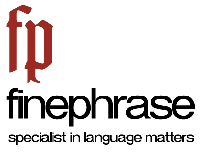Alphabetical indexes for terms in Hungarian Thread poster: finephrase
|
|---|
finephrase
Ukraine
Local time: 11:56
English to Russian
+ ...
Does anybody know how to create alphabetical indexes for terms in Hungarian?
The problem is that Hungarian, for example, contains a lot of letters with diacritical marks. Which of these letters should be included into a separate section and which shouldn’t? (E.g. should the words beginning with “A” or “Á” be in the same section or in separate sections?)
We would be grateful for the links to the web sites with examples of creating indexes.
| | | | Csaba Ban 
Hungary
Local time: 10:56
Member (2002)
English to Hungarian
+ ...
| some insight | Oct 25, 2012 |
There are two mainn rules to consider:
1. Short/long vowel pairs are listed in the same section: a-á, e-é, i-í, o-ó, ö-ő, u-ú, ü-ű
alma, álmos, altató
2. Double consonants are considered as separate letters: cs, gy, ly, ny, sz, ty, zs
cukor, csak, csupor
| | | | Csaba Ban 
Hungary
Local time: 10:56
Member (2002)
English to Hungarian
+ ...
If you use Microsoft Word, create a single-column table with all the items you need to alphabetize, change the language settings to Hungarian, and sort the table - you'll get correct results.
| | | | | Wikipedia to start | Oct 25, 2012 |
http://en.wikipedia.org/wiki/Hungarian_alphabet
See the table listing all the letters of the Hungarian alphabet.
Below the table you can read this:
"Description
Each sign shown above counts as a letter in its own right in Hungarian. Some, such as the letter ó and ő, are inter-filed with the letter preceding it; whereas others, such as ö, have... See more http://en.wikipedia.org/wiki/Hungarian_alphabet
See the table listing all the letters of the Hungarian alphabet.
Below the table you can read this:
"Description
Each sign shown above counts as a letter in its own right in Hungarian. Some, such as the letter ó and ő, are inter-filed with the letter preceding it; whereas others, such as ö, have their own place in collation rather than also being inter-filed with o."
I would add more detail to this by saying that the letter pairs that are "inter-filed" (meaning considered the same for alphabetization purposes) are the following pairs:
a - á
e - é
i - í
o - ó
ö - ő
u - ú
ü - ű
These pairs represent the short and long version of the same vowel.
Please note that there is no mixing between the members of different pairs, they are considered different for alphabetization purposes. So, o is not the same as ö, and ó is not the same as ő.
As to the double- and triple letter consonants such as cs, dz, dzs, etc, as the explanation says under the table, they are considered unique letters, so for alphabetization purposes they are not "broken up" into their component letters.
So a word starting with "cs" will always be listed after any word starting with "c".
I hope this makes it clear.
Katalin
[Edited at 2012-10-25 14:35 GMT] ▲ Collapse
| | | | To report site rules violations or get help, contact a site moderator: You can also contact site staff by submitting a support request » Alphabetical indexes for terms in Hungarian | CafeTran Espresso | You've never met a CAT tool this clever!
Translate faster & easier, using a sophisticated CAT tool built by a translator / developer.
Accept jobs from clients who use Trados, MemoQ, Wordfast & major CAT tools.
Download and start using CafeTran Espresso -- for free
Buy now! » |
| | Anycount & Translation Office 3000 | Translation Office 3000
Translation Office 3000 is an advanced accounting tool for freelance translators and small agencies. TO3000 easily and seamlessly integrates with the business life of professional freelance translators.
More info » |
|
| | | | X Sign in to your ProZ.com account... | | | | | |






